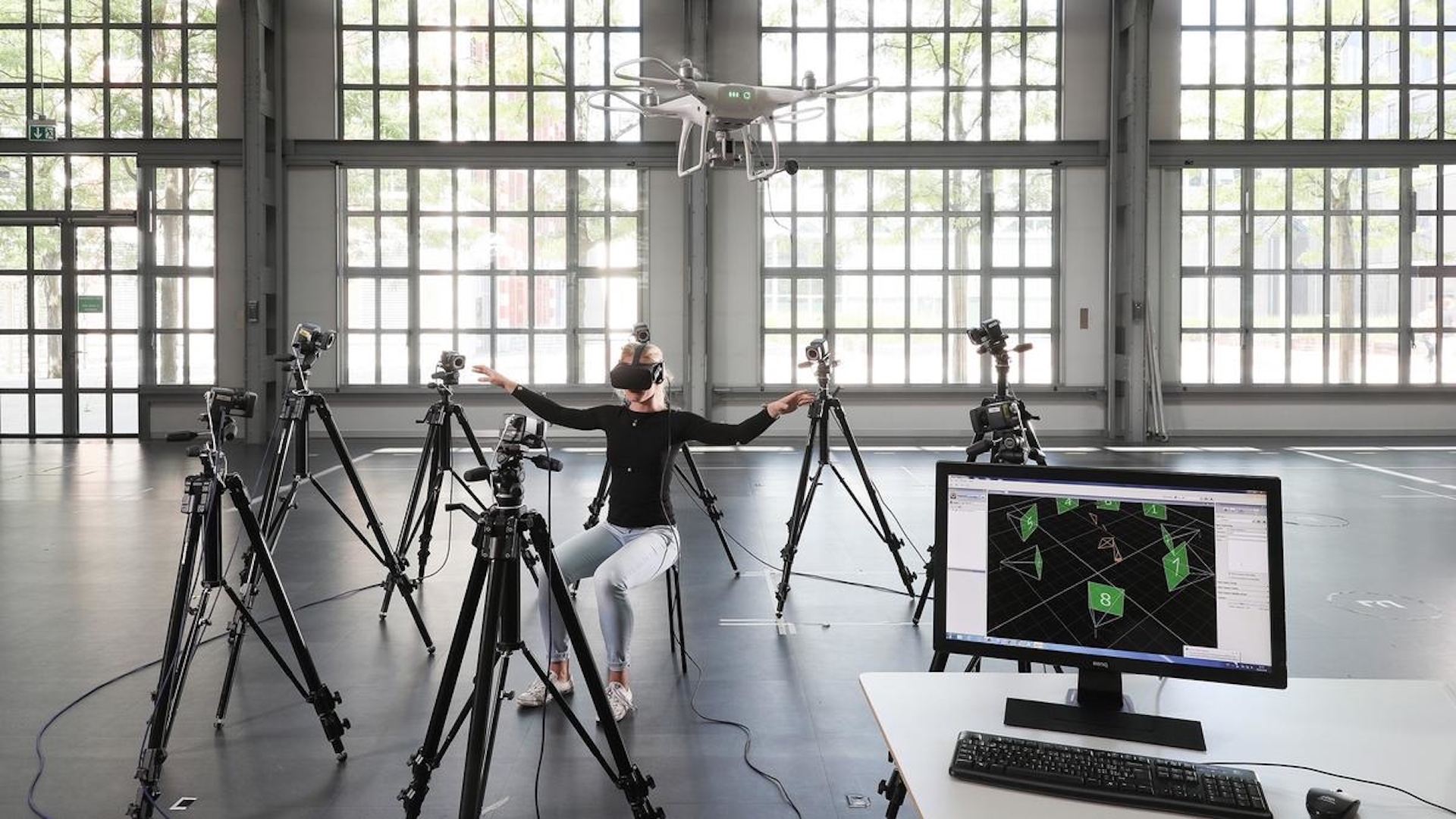

A few months ago, we reported on the efforts of Swiss researchers at the École Polytechnique Fédérale de Lausanne (EPFL) University to develop a more immersive, virtual reality-centric and body movement-based way of piloting drones. It now seems as though the team in charge of furthering this project has refined its research and development significantly, reducing the number of sensors required and shifting its focus toward search and rescue operations, according to the EPFL.
EPFL researchers essentially found that with the simple implementation of four sensors on a person’s torso, users can navigate virtual obstacle courses with such precision that this new body-based system is more reliable as an input device than a traditional joystick or controller.
The conclusion was made after extensive testing on the physical movements and muscular behavior of 17 test subjects, which had 19 infrared sensors placed on their bodies. The participants then used virtual reality goggles to pilot virtual drones through simulated environments, leading researchers to discover that only four of the 19 sensors were needed to achieve reliable results.

“It’s very intuitive, easy to learn, and it’s immersive,” said the study’s lead author, Jenifer Miehlbradt of EPFL’s Translational Neuroengineering Laboratory. “It gives you a feeling that you are flying, and we found that for some users, in particular, those who are not used to play video games or to virtual reality, it’s much easier to use their body than a joystick or a keyboard.”
For Miehlbradt, the potential for humanitarian use-cases is vast. By freeing users from the arguably finicky nature of gamepads or sensitive joysticks, people who’d otherwise never even consider piloting drones now have an easier point of entry. “Our aim was to design a control method which would be easy to learn and therefore require less mental focus from the users so that they can focus on more important issues, like search and rescue,” explained Miehlbradt.
Naturally, that’s a huge boost to the more traditional first responders who might find an appeal in this liberated method. “We have a strong collaboration with certain rescue groups, and with our system we could simplify this process,” explained Miehlbradt. “As it’s very simple and intuitive to control, you can focus not only on steering a drone but also on exploring the environment and looking for potential [sic] important information.”
Ultimately, any step toward more user-friendly drone use in order to expand the technology to emergency services is a step in the right direction. Hopefully, the EPFL team continues to develop this into a cohesive, reliable system that works right out of the box, so more first responder groups can at least consider adding unmanned aerial vehicles to their tool belts.